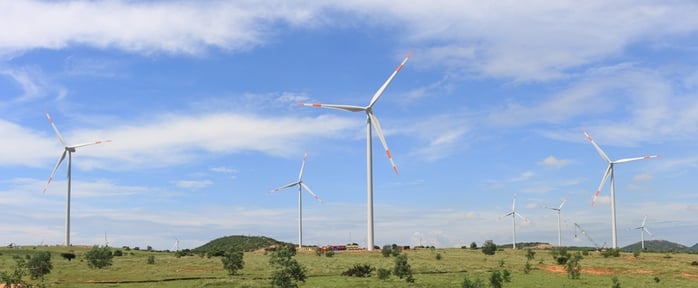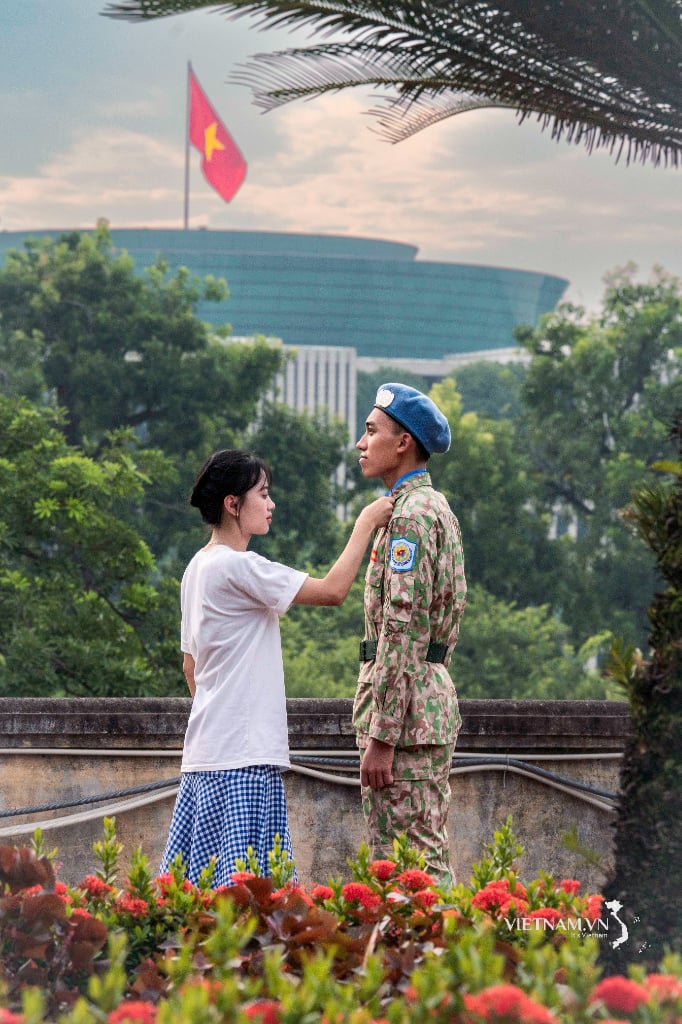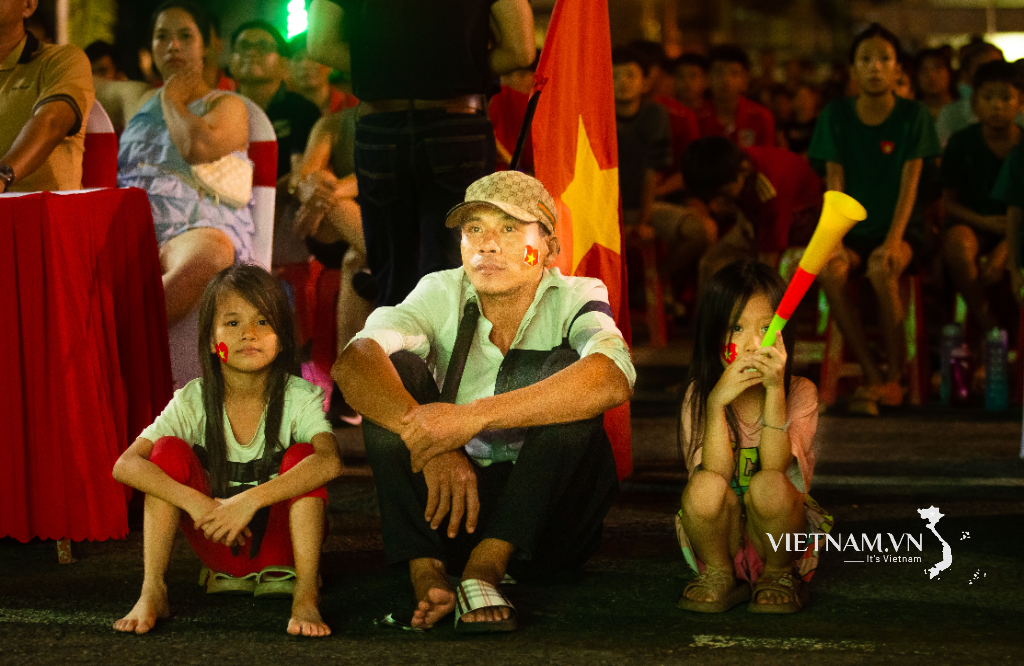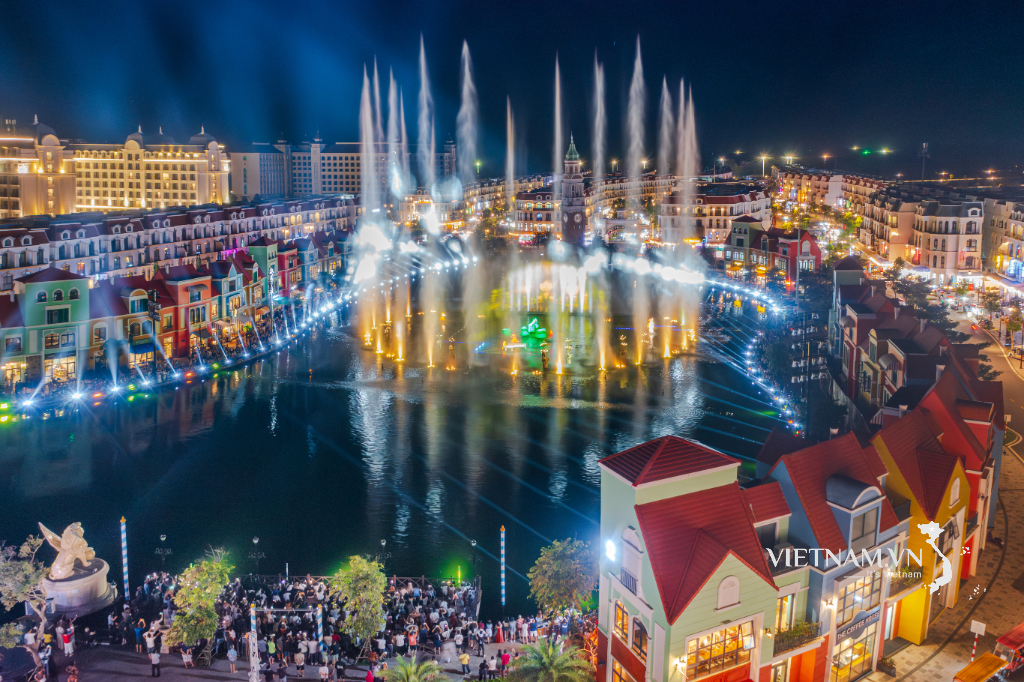According to experts, to meet the funding needs for environmental projects and achieve net-zero emissions by 2050, Vietnam needs long-term financing of up to US$368 billion. In this context, the banking sector plays a crucial role as a financial intermediary, providing capital for the green economy .
Raising international capital
The Vietnam Investment and Development Bank ( BIDV ) is implementing a VND 10 trillion credit package to finance "green building" projects. This preferential interest rate credit package applies to businesses borrowing capital for new investments or for expanding and renovating existing buildings into green buildings. Previously, BIDV also implemented a VND 4.2 trillion green credit package to support textile and garment businesses in their green transition towards sustainable development.

Renewable energy is a major contributor to the green transition of the economy, and it also has a huge demand for green credit. (Photo: Hoai Duong)
According to BIDV, by the end of the first quarter of 2024, the bank's green credit outstanding reached VND 73,394 billion - accounting for 4% of its total credit outstanding, with 2,069 projects and business plans from 1,698 customers. "Not only is BIDV one of the largest green credit providers in the market today, but it has also successfully mobilized VND 5,000 billion in green deposits - a resource for projects reducing emissions and protecting the environment. With green deposit products, the bank commits to using all of the funds to finance green projects such as renewable energy, clean energy, and green buildings," a BIDV representative stated.
Southeast Asia Bank ( SeABank ) has also recently raised nearly $850 million from leading global financial institutions such as the International Finance Corporation (IFC), the US Development Finance Corporation (DFC), and the Asian Infrastructure Investment Bank (AIIB)... for environmental projects requiring large, long-term capital.
Ms. Le Thu Thuy, Vice Chairwoman of the Board of Directors of SeABank, said that the bank is striving to link the public and private sectors to create transparent and attractive opportunities for the market, thereby promoting investments in Vietnam's blue economy. This will help businesses, especially small and medium-sized enterprises, have sufficient capital to develop and expand their operations related to green projects.
Vietnam Prosperity Bank (VPBank) and Japan International Cooperation Bank (JBIC) have also recently signed a credit agreement worth up to US$150 million to finance renewable energy and power transmission projects in Vietnam. This unsecured loan is part of the AZEC concept – the Asian Zero Emission Community – initiated by the Japanese government, in an effort to achieve carbon neutrality and economic growth tailored to each country's circumstances.
According to data from the State Bank of Vietnam, as of mid-2024, 50 credit institutions had generated a total outstanding green credit balance of VND 650,300 billion, an increase of 4.71% compared to the end of last year and accounting for 4.5% of the total outstanding loans in the economy. Green credit is mainly concentrated in the clean energy sector (nearly 45%) and green agriculture (nearly 30%).
Green funding remains modest.
In reality, Vietnam does not yet have a common regulation on green classification categories that is consistent with economic sector classifications and international practices. This list would help credit institutions have a basis for specific assessment of each project when appraising loans, in order to focus and prioritize the allocation of capital appropriately.
Economist Dr. Tran Du Lich stated that Vietnam began implementing green credit practices in 2015. At that time, the State Bank of Vietnam and the International Monetary Fund (IMF) issued a handbook guiding 15 sectors on the application and development of green credit. However, to date, the proportion of green credit in the total outstanding credit remains relatively small, despite a relatively high growth rate.
To improve the situation, experts suggest that coordination between the government, banks, and businesses is needed to raise awareness, create a favorable environment, and diversify green credit products.
According to Mr. Pham Hong Hai, General Director of Orient Commercial Bank (OCB), one of the main reasons why the scale of green credit in Vietnam remains modest is that businesses, especially small and medium-sized enterprises (SMEs), face difficulties in accessing green capital.
"Many businesses don't fully understand the concept of green credit and its benefits. Information about green credit products, criteria, and loan procedures is often not widely disseminated, making it difficult for businesses to find reliable and complete information regarding the conditions and requirements for green projects. The green loan process is also more complex than traditional loans, requiring many assessment steps and necessary documents," Mr. Hai pointed out.
Meanwhile, green projects are often considered high-risk, making it difficult to assess the effectiveness of loans from both social and financial perspectives. Therefore, banks have to lend under stricter conditions, such as higher interest rates, corresponding to the level of risk of the project. "To facilitate the flow of green credit, I propose that the State Bank of Vietnam consider offering incentives and rewards to banks that actively lend to green projects to encourage the implementation of green products, such as providing loan guarantees for renewable energy projects," Mr. Hai suggested.
Mr. Tran Hoai Phuong, Director of the Corporate Customer Division at Ho Chi Minh City Development Bank (HDBank), shared that the bank is fortunate to have access to and access to capital from many foreign financial institutions. These institutions want businesses to develop in a green direction, but to borrow capital, businesses must proactively transition to green and present the green model they are pursuing.
(*) See Nguoi Lao Dong Newspaper, issue dated October 31st.
Many green commitments
The State Bank of Vietnam announced that the Asian Development Bank (ADB) has committed loans, grants, and technical assistance to green and sustainable projects and programs in Vietnam with a total committed value of over US$11.6 billion.
The World Bank has also provided Vietnam with financing totaling $18.7 billion, including grants, credits, and concessional loans, through 123 green and sustainable projects.
Source: https://nld.com.vn/chuyen-doi-xanh-la-co-hoi-nhu-cau-thuc-day-dong-von-tin-dung-xanh-196241101205802493.htm














































































































Comment (0)